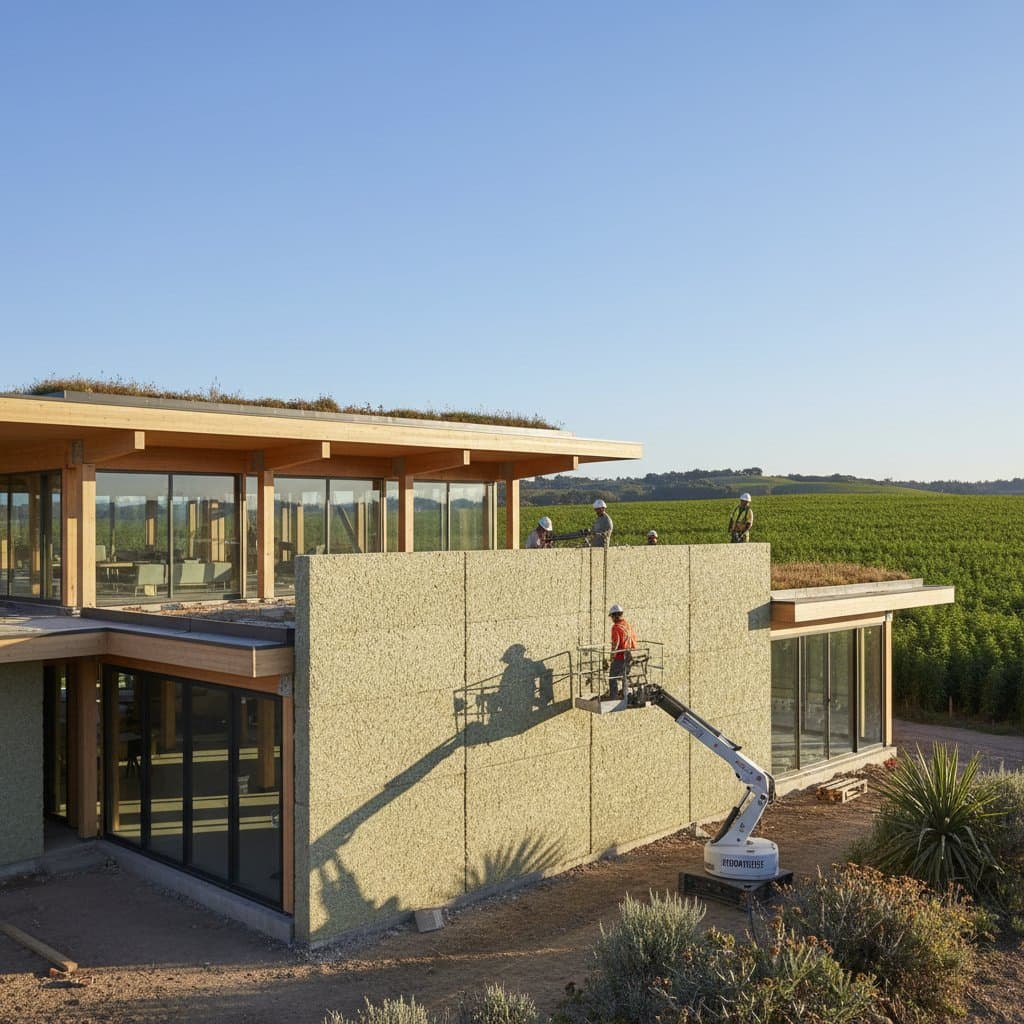Hempcrete Walls Approved: A Surge in Sustainable Construction Across 12 States
Imagine entering a home where the air quality feels superior from the moment you step inside. The walls maintain consistent warmth without excess humidity, and natural light reflects gently from organic textures. This sensory experience defines hempcrete, a bio-based material recently approved for construction in twelve states. The first encounter with a completed hempcrete wall during a local project left a lasting impression; the surface conveyed a sense of vitality.
Hempcrete emerges as a pivotal innovation in building practices. Professionals in construction, design, and homeownership in these twelve states adopt it for its aesthetic value and contributions to environmental responsibility. For those envisioning a residence that embodies stability, efficiency, and inherent beauty, hempcrete presents a compelling solution.
Opportunities for Homeowners and Builders
Approval in twelve states allows builders and renovators to incorporate hempcrete into code-compliant projects. Previously, such applications existed in regulatory ambiguity, often classified as experimental. Now, it stands as a validated alternative.
Homeowners gain access to enhanced options. Substituting conventional insulation with hempcrete improves thermal efficiency and diminishes carbon emissions. The material manages temperature fluctuations organically, easing the workload on heating and cooling systems. Residents notice improved comfort alongside reduced energy expenses.
Builders find hempcrete a distinctive feature for marketing. Clients value its environmental credentials, while teams benefit from straightforward on-site preparation and installation. The resulting finish supports diverse styles, from contemporary to rustic or understated. Finishes range from smooth lime renders to textured surfaces that evoke natural elements.
Benefits and Limitations of Hempcrete
All building materials present advantages alongside potential drawbacks. Hempcrete excels in key areas, though careful planning addresses its limitations.
Key Benefits:
- Thermal Regulation: Hempcrete maintains cooler interiors during summer and warmer conditions in winter, thereby lowering energy consumption.
- Humidity Control: The material adjusts moisture levels inherently, minimizing risks of mold or condensation.
- Environmental Impact: Hempcrete sequesters carbon during production and relies on fast-growing hemp as a primary component.
- Sound Absorption: It dampens external noise, fostering serene indoor environments.
- Visual Harmony: The organic texture and color palette introduce warmth suitable for varied architectural themes.
Potential Drawbacks:
- Curing Duration: The material requires extended drying periods, necessitating adaptable project timelines.
- Upfront Expenses: Costs for materials and labor exceed those of basic insulation, although energy savings provide long-term recovery.
- Supply Availability: Sourcing hemp hurds or lime binders may demand effort, particularly outside established regions.
- Structural Role: Hempcrete serves as infill only and requires a supporting framework, unlike load-bearing options.
Strategic approaches mitigate these issues. Builders increasingly employ prefabricated hempcrete panels to accelerate installation and manage curing in controlled settings, especially under time constraints or variable weather.
Essential Factors for Hempcrete Implementation
Cost Projections
Hempcrete wall installations align in expense with premium insulation methods. Prices fluctuate with regional hemp availability and lime sourcing. Contractors typically estimate per square foot of wall area, factoring in labor and surface treatments. Although initial investments surpass standard alternatives, reductions in operational costs and upkeep yield financial equilibrium over time.
Upkeep and Care
Completed hempcrete surfaces demand minimal attention. Employ extendable dusters for textured areas to preserve integrity during cleaning. Lime-based coatings refresh with a single application of a light layer. The moisture-resistant properties ensure prolonged freshness compared to gypsum board.
Project Scheduling
Curing spans weeks, influenced by ambient humidity. In moist climates, allocate additional time or integrate ventilation systems. Prefabricated elements streamline processes for expansive builds, compressing overall durations.
Sourcing and Market Developments
Expanding hemp cultivation introduces more regional providers. In areas such as Colorado, Oregon, and Vermont, access to hurds and binders improves steadily. Building supply outlets begin carrying hemp-lime mixtures and offer equipment rentals. Vocational programs introduce application workshops, increasing the pool of qualified practitioners annually.
Health and Design Integration
Hempcrete poses no toxicity risks and resists pests naturally. Unlike certain synthetics, it emits no volatile compounds. The lime component provides antimicrobial qualities, enhancing air purity. Complement walls with durable, eco-friendly floors like cork or patterned tiles for unified sustainable aesthetics.
The Significance of State Approvals for Construction Professionals
Regulatory endorsement in twelve states marks a breakthrough in eco-conscious building. Inspectors now apply standardized protocols, alleviating uncertainties for property owners and firms. This framework spurs investments in hemp agriculture and manufacturing, fostering localized supply chains from cultivation to application.
Small-scale contractors discover viable expansion paths. Demand from environmentally aware clients favors reduced-emission choices, where hempcrete delivers effectively. Compliance with rigorous efficiency standards becomes simpler. Professionals who integrate hempcrete once often continue, as mastery develops quickly and outcomes prove reliable.
Experiencing Hempcrete in Daily Use
Residing amid hempcrete walls alters perceptions of interior spaces. Consistent thermal properties yield stable climates, while the finish offers enduring elegance. Daily light variations highlight subtle textures, and balanced humidity contributes to well-being. The knowledge that walls actively capture carbon adds profound satisfaction.
Renovation projects permit gradual adoption. Initiate with an accent wall or accessory structure. Many begin with a hempcrete workspace in the garden before extending to primary areas. Its versatility accommodates contemporary or classic motifs and integrates seamlessly with timber, masonry, or salvaged elements.
Steps to Incorporate Hempcrete into Your Project
To pursue hempcrete, connect with experienced local contractors. Request site visits to ongoing works and material demonstrations. Handling the substance and observing its functionality clarifies its rising popularity. This direct engagement equips you to decide confidently, advancing toward a more sustainable built environment.
